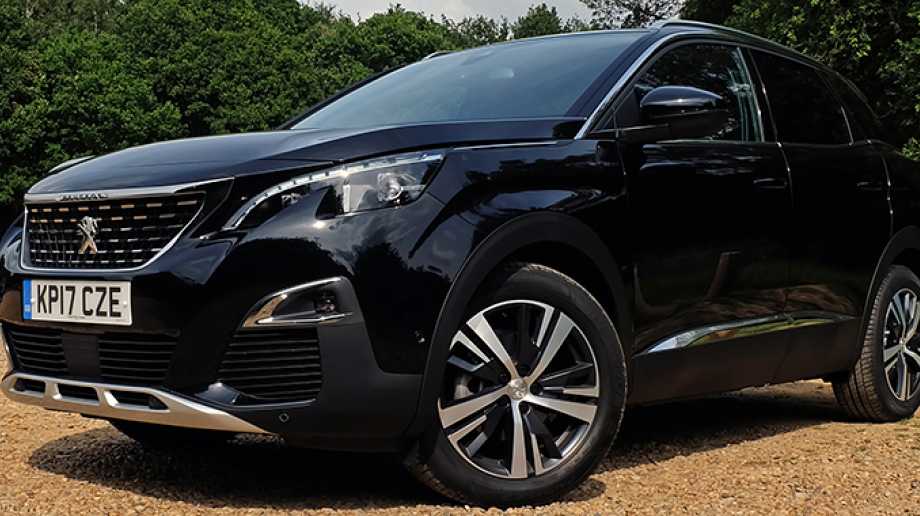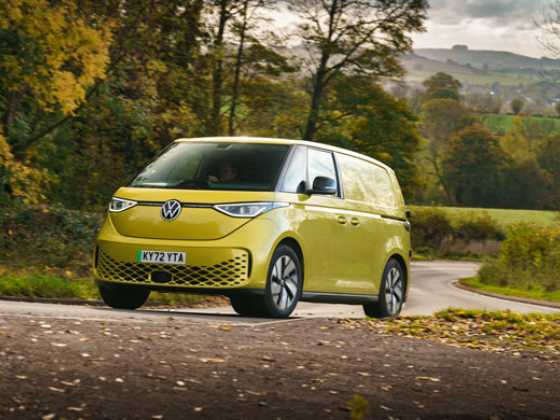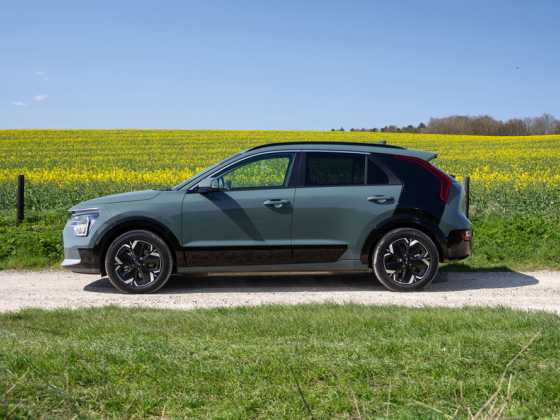Road test: Peugeot 3008 GT-Line BlueHDi 120

Peugeot has re-invented its people-carrying 3008 model, turning it from MPV to SUV. More stylish than before and with more upmarket aspirations, how does it face up to its new competition?
What is it?
Arriving on the UK market in January this year, the Peugeot 3008 is one of the newest SUVs to be launched. Carrying the name of its predecessor, that’s about the only two things the cars have in common. The first-generation Peugeot 3008 was more of an MPV rather than an SUV, so the French company has radically re-invented its mid-size people‑carrying offering and taken advantage of the growing SUV sector with the new car.
Gone are the ungainly looks of the original 3008, replaced with a much more interesting shape, with more than a handful of daring design details. While the shape is familiar to SUV drivers, the new 3008 is one of the most radical Peugeots of recent times, and also puts in a bid to be one of the most prestigious, too, thanks to its more premium pricing structure.
The car has also won critical praise, being crowned the European Car of the Year 2017, an award decided by the 58 members of the European motoring press from 22 countries.
How does it drive?
The Peugeot 3008 is powered by a range of PSA Group latest-generation PureTech petrol and BlueHDi diesel engines. While the turbocharged 1.2-litre three-cylinder PureTech unit has won the International Engine of the Year Awards 1.0‑litre to 1.4-litre category for the second year running, it’s the BlueHDi EU6‑compatible diesel engine on test here.
In the 3008 range, the BlueHDi 120 is the mid-range engine which features the fuel‑efficient diesel technology, smaller 100bhp and larger 150bhp variants below and above it in the 3008 line-up.
With 221lb ft/300Nm of torque produced from 1,750rpm, the 3008 GT-Line BlueHDi 120 gets to 62mph from rest in 11.2 seconds, and goes on to a maximum speed of 117mph. It feels spritely, too, and its 1,300kg weight belies its chunky appearance.
It pulls well though its six-speed manual gearbox which is precise and easy to use, though when at slow speeds you have to drop down to first gear to get a clean getaway, otherwise the car stalls. That’s a common issue on many new diesel cars, though, and isn’t isolated to the 3008.
As befits its premium aspirations, the mid‑size Peugeot SUV is a comfortable cruiser on the motorway. The company’s much-vaunted ‘i-Cockpit’ layout with a smaller steering wheel and instruments presented higher works well, and you soon get used to the slightly odd wheel‑instrument relationship. It soon becomes second nature and doesn’t feel uncomfortable.
The small steering wheel makes the car feel more agile and nimble than perhaps an SUV has a right to, and the steering itself has some weight to it and isn’t too light, which means you can place the car accurately. For an SUV, the 3008 handles well, out of town and in it, too, with only more severe undulations and road imperfections throwing it off course.
Going back to the looks, the 3008 looks undoubtedly smart and modern and many people who were introduced to the car didn’t think it looked obviously like a Peugeot. Sharing many design cues with its smaller 2008 sibling – the 3008 is based on the Volkswagen Golf-sized 308, the 2008 is based on the 208 supermini – the 3008 GT‑Line features silver-finished roof rails, 18-inch ‘Detroit’ two-tone diamond-cut alloy wheels, and satin copper ‘GT-Line’ emblem.
Nice design touches include where the roof rails meet rear pillar and the gentle sculpting of the doors and bonnet.
The interior of the 3008 is where the car plays its quality card. Sumptuous, with a nice mix of ‘Brumeo’ fabric on the door panels and dashboard, blue mood lighting in the roof and doors adds even more of a premium feel. The sports seats are comfortable, and there is plenty of room in the back, too, while the 591-litre boot is colossal for the 3008’s size.
The ‘i-Cockpit’ also extends to the centre console which sweeps around the driver and houses alloy-effect toggle switches for the functions on the 8.0-inch colour touchscreen infotainment system. Similar to those on the DS 5, the piano key-like buttons really look and feel the part and are a surprising feature.
The actual touchscreen system is the same as in other modern PSA Group cars and works in the same way. It doesn’t have the most logical menu, but the display is better than some of its rivals and doesn’t look dated either. We do worry about the heater controls being all on-board the touchscreen system though, and would prefer them to be more readily accessible for ease of use.
The 12.3-inch head-up 100 per cent digital instrument display is impressively easy to use. Very crisp and clear, it wows with its changeable and configurable displays. ‘Dials’, ‘Navigation’, ‘Driving’ or ‘Personal’ modes can be chosen, and relay appropriate information back depending on which mode is selected.
How economical is it?
Peugeot claims that the latest generation BlueHDi engines ‘deliver a driving experience rich in power and performance but with exceptional fuel economy and CO2 emissions’. The official claimed combined cycle fuel economy figure of 70.6mpg. Over our longer than usual 492-mile test, we achieved an average of 51.9mpg.
All BlueHDi engines feature Selective Catalytic Reduction (SCR) and Particle Filtration processes, and Peugeot states that a three-stage cleansing process targets pollutants, removing hydrocarbons and carbon monoxide, reducing nitrogen oxides by up to 90 per cent and eliminating 99.9 per cent of particulates. All Peugeot 3008s have Stop & Start technology which cuts the engine when the car is at a standstill.
What does it cost?
The Peugeot 3008 range starts with the Active 1.2-litre PureTech 130 S&S 6-speed manual at £22,495. The cheapest diesel is the £23,525 Active BlueHDi 100 S&S 6-speed manual. The Allure trim starts at £24,295, while the higher-specification GT-Line such as our test car costs from £26,195.
Our mid‑trim BlueHDi 120 car is priced at £28,025, while the options of ‘Nero Black’ metallic paint (£525) and an electric panoramic glass sunroof (£990) nudged the price up to £29,720. The range-topping GT trim is only available with the highest output 180bhp BlueHDi diesel engine, and costs £33,695.
GT-Line specification is well-equipped, though. Mistral ‘Imila’ leather effect seat trim, a wireless smartphone charging plate, full LED headlamps and fog lights, LED sequential scrolling front indicators and door mirror-mounted LED ‘Peugeot’ approach lights all feature as standard. There’s also the ‘i-Cockpit Amplify’ system which allows the choice of two configurable interior ambiences: ‘Boost’ and ‘Relax’.
Safety systems are high on the 3008 GT-Line’s agenda, too, with automatic emergency braking, blind spot detection, distance alert, lane departure, and self‑levelling headlamps all fitted.
For comparison, a similar-size and output SEAT Ateca (see pages 52-53 for our road test of the 1.0-litre TSI petrol model) SE Technology costs £24,330 but has slightly less kit (move up to the £28,410 FR for a similar level of equipment and more power), while a Volkswagen Tiguan SE Navigation is listed at £28,865, but again has more power from the same 2.0-litre TDI engine as the SEAT.
A Ford Kuga Titanium X TDCi 120 meanwhile is £29,045 but isn’t as sumptuous as the 3008, while the recently-updated Nissan Qashqai is priced from £27,780 in Tekna 1.5 dCi 110 guise, rising to £29,030 for the 1.6 dCi 130-engined version.
How much does it cost to tax?
With impressively-low CO2 emissions of just 104g/km, the Peugeot 3008 GT-Line BlueHDi 120 costs £140 in Vehicle Excise Duty for the first year in accordance with the revised rates which came into force in April 2017. For subsequent years, the rate is the same.
The cleanest 3008 is the Active BlueHDi 100 S&S at 103g/km, but this slots into the same £140 first and subsequent-year rate bracket. The most expensive 129g/km 1.6-litre THP 165 petrol-engined 3008 costs £160 in the first year, slipping to £140 thereafter.
When it comes to BIK rates, the GT-Line BlueHDi 120 sits in the 22 per cent band.
Why does my fleet need one?
Handsomely stylish, well-built and moderately economical, there are many things to like about the Peugeot 3008 GT-Line BlueHDi 120. The French SUV impresses with its fit, finish, and tech count, while its on-road manners lend more of a feel akin to its mid‑sized hatchback relative. It’s not as enjoyable to drive as its SEAT Ateca rival, but its tidy handling does bring some enjoyment.
Despite its pumped-up looks, there is no four-wheel drive version for now, and Peugeot has deigned not to replace the previous 3008’s diesel-electric Hybrid4 powertrain, but a petrol‑electric plug-in hybrid may arrive in 2019.
To sum up then, the 3008 GT-Line fufills its premium aspirations well, should please with its high level of standard equipment, and is a decent drive, all with an added dose of stylish economy and practicality.









